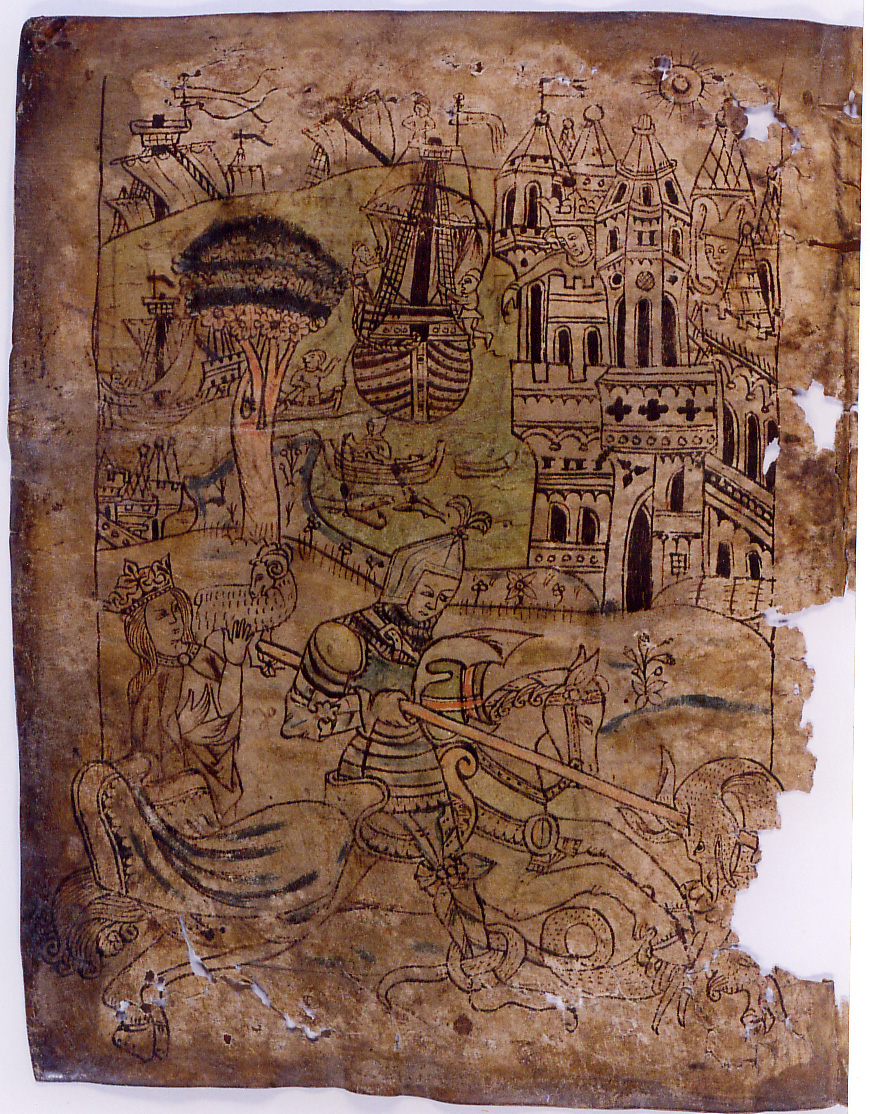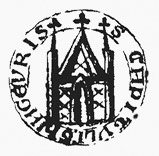|
Teiknibók
''Teiknibók'' (Reykjavík, Stofnun Árna Magnússonar, AM 673 a III 4to) is an Icelandic manuscript of drawings used as models for manuscript illumination, painting, carving and metalwork. It is remarkable for being one of only three dozen books of its type which survive from Western Europe and the only example extant from medieval Scandinavia. The manuscript was produced over a period of over 150 years by four anonymous artists, beginning in around 1330. The illustrations in ''Teiknibók'' resemble those in '' Kirkjubæjarbók'', and it may have served as a model for them. In the words of the manuscript's most recent editor Guðbjörg Kristjánsdóttir, "The diverse subjects of the drawings prove that Icelandic art flourished to a far greater degree than surviving works of art would indicate." History and description The manuscript was given to Árni Magnússon along with two leaves from the '' Icelandic Physiologus'' dating to around 1200. The Árni Magnússon Institute in Ic ... [...More Info...] [...Related Items...] OR: [Wikipedia] [Google] [Baidu] |
Kirkjubæjarbók
Kirkjubæjarbók (Codex AM 429 12mo) is an Icelandic manuscript produced in around 1500 containing female saints' sagas. It is notable for being the only extant Old-Norse Icelandic legendary which exclusively deals with female saints and for being the only extant text which contains Old Norse-Icelandic prose and poetic accounts of St Dorothy. The book takes its name from the convent of Kirkjubær, which likely held the codex until King Christian III of Denmark dissolved the Icelandic monasteries in the mid sixteenth century. Contents The codex contains material in Old-Norse Icelandic and Latin relating to eight saints' legends: St Margaret of Antioch, St Catherine of Alexandria, St Cecilia, St Dorothea of Caesara, St Agnes, St Agatha, St Barbara, and Sts Fides, Spes and Caritas. Apart from the prose and poetry relating to St Dorothy, the legends all exist in other manuscripts written before 1500, though it is the only text which preserves the legend of St Cecilia in i ... [...More Info...] [...Related Items...] OR: [Wikipedia] [Google] [Baidu] |
Icelandic Physiologus
The Icelandic ''Physiologus'' is a translation into Old Icelandic of a Latin translation of the 2nd-century Greek ''Physiologus''. It survives in fragmentary form in two manuscripts, both dating from around 1200, making them the earliest illustrated manuscripts from Iceland and among the earliest Icelandic manuscripts generally. The fragments are significantly different from each other and either represent copies from two separate exemplars or different reworkings of the same text. Both texts also contain material that is not found in standard versions of the ''Physiologus''. Summary The Icelandic ''Physiologus'' exists in two versions: Fragment A (AM 673 a I 4to) consisting of five entries, and Fragment B (AM 673 a II 4to) with eighteen. There contents are as follows: * Fragment A: *# I. The Phoenix *# II. The Hoopoe *# III. The Siren *# IV. The Horsefly *# V. The Onocentaur * Fragment B: *# I. The Hydra *# II. The Goat *# III. The Wild Ass *# IV. The Monkey *# V. The ... [...More Info...] [...Related Items...] OR: [Wikipedia] [Google] [Baidu] |
Icelandic George
Icelandic refers to anything of, from, or related to Iceland and may refer to: *Icelandic people *Icelandic language *Icelandic orthography *Icelandic cuisine See also * Icelander (other) * Icelandic Airlines, a predecessor of Icelandair * Icelandic horse, a breed of domestic horse * Icelandic sheep, a breed of domestic sheep * Icelandic Sheepdog, a breed of domestic dog * Icelandic cattle Icelandic cattle ( ) are a breed of cattle native to Iceland. Cattle were first brought to the island during the Settlement of Iceland a thousand years ago. Icelandic cows are an especially colorful breed with a wide variety of colours and marki ..., a breed of cattle * Icelandic chicken, a breed of chicken {{disambig Language and nationality disambiguation pages ... [...More Info...] [...Related Items...] OR: [Wikipedia] [Google] [Baidu] |
Reykjavík
Reykjavík is the Capital city, capital and largest city in Iceland. It is located in southwestern Iceland on the southern shore of Faxaflói, the Faxaflói Bay. With a latitude of 64°08′ N, the city is List of northernmost items, the world's northernmost capital of a sovereign state. Reykjavík has a population of around 139,000 as of 2025. The surrounding Capital Region (Iceland), Capital Region has a population of around 249,000, constituting around 64% of the country's population. Reykjavík is believed to be the location of the first permanent settlement in Iceland, which, according to , was established by Ingólfr Arnarson, Ingólfur Arnarson in 874 Anno Domini, AD. Until the 18th century, there was no urban development in the city location. The city was officially founded in 1786 as a trading town and grew steadily over the following decades, as it transformed into a regional and later Country, national centre of commerce, population, and governmental activities. Re ... [...More Info...] [...Related Items...] OR: [Wikipedia] [Google] [Baidu] |
Scandinavia
Scandinavia is a subregion#Europe, subregion of northern Europe, with strong historical, cultural, and linguistic ties between its constituent peoples. ''Scandinavia'' most commonly refers to Denmark, Norway, and Sweden. It can sometimes also refer to the Scandinavian Peninsula (which excludes Denmark but includes a part of northern Finland). In English usage, Scandinavia is sometimes used as a synonym for Nordic countries. Iceland and the Faroe Islands are sometimes included in Scandinavia for their Ethnolinguistics, ethnolinguistic relations with Sweden, Norway and Denmark. While Finland differs from other Nordic countries in this respect, some authors call it Scandinavian due to its economic and cultural similarities. The geography of the region is varied, from the Norwegian fjords in the west and Scandinavian mountains covering parts of Norway and Sweden, to the low and flat areas of Denmark in the south, as well as archipelagos and lakes in the east. Most of the population ... [...More Info...] [...Related Items...] OR: [Wikipedia] [Google] [Baidu] |
Árni Magnússon Institute For Icelandic Studies
The Árni Magnússon Institute for Icelandic Studies ( ; abbreviated to ) is a university-level institute, which operates on an independent budget under the auspices of the Ministry of Culture, Innovation and Higher Education. The institute fosters close links with the University of Iceland, and forms part of its academic community. According to Act 2006 no. 40 12 June, the role of the institute is to conduct research in the field of Icelandic studies and related scholarly disciplines, in particular Icelandic language and literature; to disseminate knowledge in these fields; and to preserve and augment the collections entrusted to its care. The Árni Magnússon Institute for Icelandic Studies is named after the 17th–18th century collector of medieval Icelandic manuscripts, Árni Magnússon. The Árni Magnússon Institute for Icelandic Studies was founded in 2006 by the merger of five former institutes, the Árni Magnússon Institute, the Icelandic Language Institute, the Un ... [...More Info...] [...Related Items...] OR: [Wikipedia] [Google] [Baidu] |
Þingeyraklaustur
Þingeyraklaustur was a monastery of the Order of Saint Benedict located in Þingeyrar on Iceland from 1133 until 1551. It was the first monastery in Iceland and probably the last to be closed by the Icelandic Reformation. History The monastery was founded by bishop Jón Ögmundsson in 1106, but it was not inaugurated until 1133 when its first abbot, Vilmundur Þórólfsson, was officially installed in office. Jón Ögmundsson assured the monastery an income from all farms between Hrútafjörður and Vatnsdalsá. Þingeyraklaustur was one of the largest and richest monasteries in Iceland and a famous center of literature, culture and education, famed for its library. Arngrímr Brandsson, Karl Jónsson, Gunnlaugr Leifsson and Oddr Snorrason were all religious brothers at Þingeyraklaustur and active as writers, and the writer Styrmer Kåresson is believed to have been educated there as well. A large number of Sagas of Icelanders were either produced or copied at the monast ... [...More Info...] [...Related Items...] OR: [Wikipedia] [Google] [Baidu] |
Stjórn
Stjórn () is the name given to a collection of Old Norse translations of Old Testament historical material dating from the 14th century, which together cover Jewish history from Genesis through to II Kings. Despite the collective title, Stjórn is not a homogeneous work. Rather, it consists of three separate works which vary in date and context, labelled Stjórn I, II and III by scholar I.J. Kirby.Kirby, I. J. (1986) Bible Translation in Old Norse, Genève: University of Lausanne, Publications de la Faculté des Lettres XXVII p. 51 Stjórn I covers Genesis to Exodus 18 with much additional material from Peter Comestor and Vincent Beauvais.Kirby, I. J. (1986) Bible Translation in Old Norse, Genève: Université de Lausanne, Publications de la Faculté des Lettres XXVII pp. 52-3 Stjórn II completes the Pentateuch; it is based closely on the text of the Vulgate but is significantly abbreviated. Stjórn III treats Joshua to the Exile with some abbreviation and expansion and uses b ... [...More Info...] [...Related Items...] OR: [Wikipedia] [Google] [Baidu] |
East Anglia
East Anglia is an area of the East of England, often defined as including the counties of Norfolk, Suffolk and Cambridgeshire, with parts of Essex sometimes also included. The name derives from the Anglo-Saxon kingdom of the East Angles, a people whose name originated in Anglia (Angeln), in what is now Northern Germany. East Anglia is a predominantly rural region and contains mainly flat or low-lying and agricultural land. The area is known for considerable natural beauty. It shares a long North Sea coastline and contains one of the ten national parks in England, The Broads. Norwich is the largest city in the region. Area Definitions of what constitutes East Anglia vary. The Anglo-Saxon Kingdom of East Anglia, established in the 6th century, originally consisted of the modern counties of Norfolk and Suffolk and expanded west into at least part of Cambridgeshire, typically the northernmost parts known as The Fens. The modern NUTS 2 statistical unit of East Anglia compri ... [...More Info...] [...Related Items...] OR: [Wikipedia] [Google] [Baidu] |


